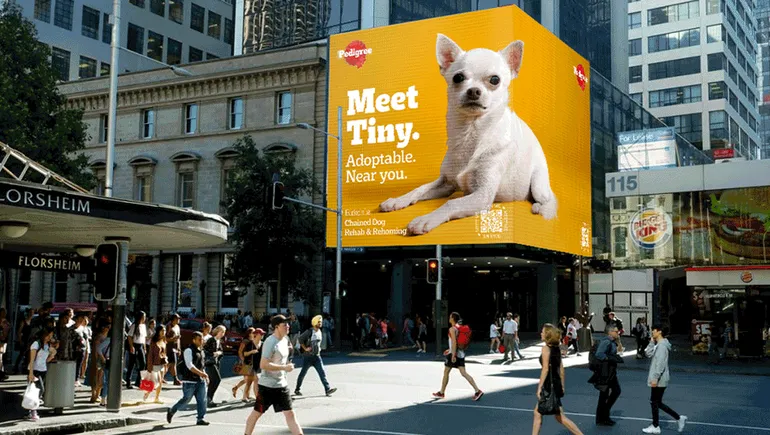
Cultural blunders : Brands gone wrong
Marketers create more brand blunders than one would think, and these blunders can cause brands a lot of harm. Some of them, if they are lucky, escape with just a touch of public ridicule and shaming. Oftentimes, the advertising, marketing, and PR agencies come out unscathed, but the brand can sometimes take years to recover.
Attempts to create globally consumed brands, or regionally consumed brands throughout AsiaPac, have proved challenging. Changing a product to cater for local needs or tastes risks destroying the qualities that made the brand desirable when it was first created. Keeping a brand’s heritage intact when it enters a new market is likely to mean that marketers need to retain characteristics that root it in the culture it came from.
[ad_1]Some brands seem to think that they can convince overseas consumers that their products and services transcend cultural barriers. Wrong.
To prove my point, I’ve gathered a list of marketing blunders made by some of the biggest and most loved brands. All of these campaigns surely had thousands if not millions of dollars into them, yet the companies couldn’t take the time or money to check translations or research the culture nuances. Poor sense, poor taste, poor judgement, ignorance, and above all, laziness can all be blamed. This just shows how important it is to research before thinking your brands and advertising campaigns can work in any international market.
a) Gerber
When Gerber, a Nestle owned purveyor of baby foods first started selling their baby food in Africa, they used the same packaging as in the USA – with the cute baby on the label. Later they found out that in Africa companies routinely put pictures on the label of what is inside the package, since most people cannot read.
b) Coca-Cola
When Coca-Cola entered the China market, they named their product something that when pronounced, sounded like, “Coca-Cola”. The only problem was that the characters used meant “Bite the Wax Tadpole”. When they learned of their blunder, they later changed to a set of characters that mean “Happiness in the Mouth”. [Coca-Cola claims this famous blunder was made not by the company itself, but by retailers in China. -Ed.]
c) Vicks
When Vicks first introduced its cough drops in the German market, they were chagrined to learn that the German pronunciation of “v” is “f” which in Germany is the guttural equivalent of “sexual penetration”.
d) Puffs
When Puffs tissues tried to introduce its product, they were quick to learn that “Puff” in German is a colloquial term for a whorehouse. The CMO behind that brand must have been sleeping.
e) Panasonic
In the mid-1990s, people everywhere were still discovering the joy of home computers. Japanese engineers at Panasonic were way ahead of the curve, and in 1996 they developed a touch screen PC for the home market. They decided to market the product aggressively in the US using a mascot called Woody. At the time, the American created Woody Woodpecker cartoon character was apparently huge in 1990s Japan.
After securing the rights to use Mr. Woodpecker and conducting an amount of research so infinitesimal that marketers are still studying it today, Panasonic proudly dubbed their new touchscreen computer “The Woody”, not knowing that “wood” is American slang meaning “hard penis”. But wait, it gets better—to truly set their touch screen capability apart from the competition, Panasonic named the feature “Touch Woody.
“Things went south from there. Panasonic had no clue that anything was wrong with the slogan until the day before the ads were set to launch, when an American staff member informed them of the sexual slang connotations. As a result of this mistake, its highly innovative product was a failure and the campaign became infamous.
f) Cue
Colgate introduced a toothpaste in France called “Cue”, the name of a notorious porno magazine.
g) Fiat
FIAT released an ad in Italy in which actor Richard Gere drives a Lancia Delta from Hollywood to Tibet. Gere is hated in China for being an outspoken supporter of the Dalai Lama – there was a huge on-line uproar on Chinese message boards commenting that they would never buy a FIAT car.
h) Pepsi
When Pepsi expanded their market to China, they launched with the slogan, “Pepsi brings you back to life.” What they didn’t realize is that the phrase translated to “Pepsi brings your ancestors back from the grave.” This may seem like a pretty funny mistake … but to Pepsi this was a huge mistake, especially when you’re trying to build a brand on a global level. Yipes!
i) Schweppes
In Italy, a campaign for Schweppes Tonic Water translated the name into “Schweppes Toilet Water”
j) Kentucky Fried Chicken
In Chinese, the Kentucky Fried Chicken slogan “finger-lickin’ good” came out as “Eat your fingers off”. That wasn’t KFC’s only blunder. In the mid-1980’s when the brand launched their first store in Hong Kong, they used chickens raised and fed in China. The Chinese feed their chickens fish—so the taste was not the same as America’s KFC. The company closed their store and did not re-open until ten years later.
k) Parker
When Parker Pen marketed a ballpoint pen in Mexico, its ads were supposed to have read “It won’t leak in your pocket and embarrass you”. Instead, the company thought that the word “embarazar” (to impregnate) meant to embarrass, so the ad read: “It won’t leak in your pocket and make you pregnant”. This is a strong example of how companies should heavily research translation before launching their brands internationally. It would have taken only minutes for a professional translator to verify the correct translation of the line in question. But wait, that’s not all. Once again in South America, Parker Pens released a pen named ”The Jotter” which is slang for ‘jockstrap’. Marketers should note this warning: using internet translators for international ad campaigns is not suggested.
l) Coors
In Spain, when Coors Brewing Company translated its slogan “Turn it loose” into Spanish, it read as: “Suffer from diarrhea”.
m) Clairol
The hair products company, Clairol, introduced the “Mist Stick” – a curling iron – into Germany, only to find out that “mist” is slang for manure. Not too many people had use for the manure stick.
n) Salem
The American slogan for Salem cigarettes, “Salem – Feeling Free” was translated into the Japanese market as “When smoking Salem, you will feel so refreshed that your mind seems to be free and empty.”
o) Pepsi Cola
Pepsi Cola lost its dominant market share to Coke in South East Asia when Pepsi changed the color of its vending machines and coolers from deep “Regal” blue to light “Ice” blue as light blue is associated with death and mourning in their region.
p) Ikea
IKEA launched its fifth largest superstore in Bangkok. Many Scandinavian names for products have different meanings. “Redalen”, a town in Norway after which a bed sold by the Swedish furniture chain is named, sounds similar to a sex act in Thailand. Terms like “jattebra” which is the name of a plant pot, sounds like a crude Thai term for sex. IKEA had hired locals to scrutinize product names to see how they sounded in Thai before translating them into a Thailand’s cursive sans script alphabet. In some cases they changed a vowel sound or a consonant to prevent unfortunate misunderstandings.
q) Proctor and Gamble
Even companies as big and as smart as Proctor and Gamble can make brand blunders when cultural differences are not researched before hand. Proctor & Gamble used a television commercial in Japan that was popular in Europe. The ad showed a woman bathing, her husband entering the bathroom and touching her. The Japanese considered this ad an invasion of privacy, inappropriate behavior, and in very poor taste.
Cross-Culture brands campaign affects everything
The cultural values underpinning a society must be analysed carefully. What are the religions practised by the majority of the people? Is the society individualist or is it collectivist? Is there any dominant political ideology? Or economic ideology? All of these, and more, will impact a brand launch if left unexamined.
There is an important aspect of advertising in foreign markets—that being, the culture and cultural symbols of the target market are of critical importance. When creating communications, we are taught first and foremost to know our audience. Who our audience is will be essential to choosing the type of creative (language, visuals, media etc.) we use to make our messaging relevant and appealing. As brands go international—in some cases as we have seen above—brand managers can forget that simple truth.
That is, know your market. Cross cultural marketing is simply about using common sense and analysing how the different elements of a brand are impacted by culture and modifying them to best speak to their target audience. Many international companies have had problems with expanding their brands worldwide because they have failed to put in the research and effort necessary to understand the culture. This has lead to several failed brands, to offended consumers, and to the loss of millions of dollars that comes with having to start all over again.
[ad_2]





















